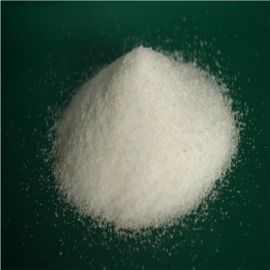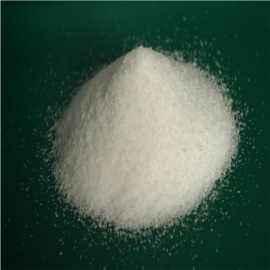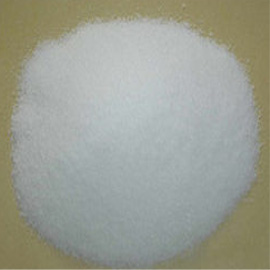Three categories of Polyelectrolytes are available.

These are high molecular weight anionic polyacrylamide flocculant which works effectively as a flocculation aid or sludge conditioning agent in numerous solid-liquid separation processes.Read More

All this grade of flocculants are high active, high molecular weight cationic flocculant which works effectively as a coagulant aid or sludge dewatering agent in liquid-solid separation processes.Read More
Anionic Polyelectrolytes
Product Range:
Powder form FLOCSURE-PA of various grades.
- FLOCSURE-PA-1128
- FLOCSURE-PA-1137
- FLOCSURE-PA-1146
- FLOCSURE-PA-1155
- FLOCSURE-PA-1164
- FLOCSURE-PA-1173
- Economical to use- Effective at very low dosage levels, resulting in reduced handling and storage cost.
- Works over a wide pH range and does not alter pH in the system.
- Larger, faster-settling flocs are formed in gravity settling operations.
- Increased filtration rates and drier cakes are produced in filtration process. Sludges contain less ash when incinerated.
- Higher solids capture, increased clarity, and greater throughput are attained in centrifugation.
- Air flotation operation produces clearer underflows and greater throughput.
Pricipal uses:
Industrial Waste Treating
Clarification of waste water or dewatering sludges from :
- Metal finishing
- Pulp and paper manufacturer
- Brewing
- Leather tanning
- Soap and detergent manufacturer
- Glass and ceramic production
- Synthetic rubber production
- Meat packing
- Oil refining
- Textile processing
- Chemical processing
- Aluminum, Steel processors
- Paint manufacturer
- Raw sewage settling.
- Clarification of primary and secondary effluents.
- Alum sludge dewatering.
- Polishing and phosphate removal process in tertiary treatment.
All the grades of our anionic flocculant should be dissolved in fresh water under low agitation to make 0.01% to 0.05% solution. Complete dissolution takes about 60 to 90 minutes, but will be faster in warm water. However avoid temperature above 500° C. Stock solution is stable for at least 3 to 4 days. Avoid turbulent mixing condition in the process stream after any grade of our anionic polyelectrolyte has been added.
| Flocculant | 0.2 ~ 2.0 ppm |
| Coagulant aid | 0.05 ~ 1.0 ppm |
| Filtration aid | 0.01 ~ 1.0 ppm |
| Sludge dewatering | 0.05 ~ 0.2 % Dry solid |
| Chemical composition | Polyacrylamide |
| Appearance | White Granule |
| Ionicity | Anionic |
| Bulk Density ( gr / ml ) | 0.65 ~ 0.7 |
| pH of solution ( 250C ) 0.1% | 6.5 ~ 7.5 |
Spilled polymer is very slippery. Spills should be scooped and / or wiped prier to flushing with water. Being highly hygroscopic avoid from exposure to air.
Please Note the information presented here is based on best of our present knowledge. However should not be considered as guarantee of any specific property or product as a whole.
Cationic polyelectrolytes
Product Range:
Powder form FLOCSURE-PC of various grades.
- FLOCSURE-PC-1146
- FLOCSURE-PC-1155
- FLOCSURE-PC-1164
- FLOCSURE-PC-1173
- Economical to use- Effective at very low dosage levels, resulting in reduced handling and storage cost.
- Gravity settling operations attain faster settling of sludge solids and improved supernatant clarity.
- Belt Press benefits through increased filtration rates and drier sludge cakes. Sludge contains less ash when incinerated.
- Centrifuges produce drier sludge cakes, greater throughput, increased solids recovery and clearer centrates.
- Air flotation systems produce clearer underflows, greater throughput and increased float-cake solids.
- Where sand drying beds are employed for sludge dewatering greater bed ladings and faster drying rates are often possible.
- Non-corrosive.
Pricipal uses:
Improves solid-liquid separations in the following applications :
- Belt Press of municipal and industrial wastewater sludges and wood pulp suspension.
- Gravity, air flotation or centrifuge thickening of wastewater sludges food wastes and paper fines.
This flocculant should be dissolved in water under low agitation to make a 0.01 to 0.05 percent solution. Dissolution should be complete in 60 minutes, but will be faster in warm water. However, avoid temperatures above 500° C. For best results provide further dilution with clean water prior to being fed to the process stream. Avoid turbulent mixing conditions in the process stream after any grade of our cationic flocculants has been added.
| Belt press, Screw Press, Filter Press or Centrifuge dewatering of municipal or industrial wastewater sludge. | 0.1 to 1%/dry solid. |
| Air flotation of activated sludge or paper mill fines | 0.1 to 5 ppm |
| Thickening, clarification or treatment of elutriated, digested primary and waste activated sludge. | 0.1 to 5 ppm |
| Chemical composition | Cationic Polyacrylamide |
| Appearance | White Granule |
| Ionicity | Anionic |
| Bulk Density ( gr / ml ) | 0.6 ~ 0.7 |
| Effective pH Range | 3 ~ 10 |
| pH of solution ( 250C ) 0.1% | 4 + 0.5 |
Spilled polymer is very slippery. Spills should be scooped and / or wiped prier to flushing with water. Being highly hygroscopic avoid from exposure to air.
Please Note the information presented here is based on best of our present knowledge. However should not be considered as guarantee of any specific property or product as a whole.
Nonionic polyelectrolytes
Product Range:
Powder form FLOCSURE-PN of various grades.
- FLOCSURE-PN-1146
- FLOCSURE-PN-1155
- FLOCSURE-PN-1164
- FLOCSURE-PN-1173
- Economical to use- Effective at very low dosage levels, resulting in reduced handling and storage cost.
- Works over a wide pH range and does not alter pH in the system.
- Larger, faster-settling flocs are formed in gravity settling operations.
- Increased filtration rates and drier cakes are produced in filtration processes. Sludges contain less ash when incinerated.
- Higher solids capture, increased clarity, and greater throughput are attained in centrifugation.
- Air flotation operations produce clearer underflows and grater throughput.
- Municipal and industrial water treatment
- Clarification industrial raw waters, often in conjunction with in organics such as Alum
- Alum sludge dewatering.
Any grade of Nonionic flocculant should be dissolved in water under low agitation to make 0.01% to 0.05 % solution. Dissolution should be complete after 60 minutes, but will be faster in warm water. However avoid temperature above 500° C. Stock solutions are stable for at least two weeks. For best results further dilution with clean water should be made prior to being fed to process stream. Avoid turbulent mixing conditions in the process stream after any grade of above product has been added.
| Flocculant | O.2 ~ 2.0 ppm. |
| Coagulant aid | O.5 ~ 1.0 ppm. |
| Filtration aid | O.01 ~1.0 ppm. |
| Sludge dewatering | O.05 ~O.2 % Dry solid |
| Chemical composition | Polyacrylamide |
| Appearance | White Granule |
| Ionicity | Nonionic |
| Bulk Density ( gr / ml ) | 0.55 ~ 0.65 |
| pH of solution ( 250C ) 0.1% | 5.5 ~ 6.5 |
Spilled polymer is very slippery. Spills should be scooped and / or wiped prier to flushing with water. Being highly hygroscopic avoid from exposure to air.
Please Note the information presented here is based on best of our present knowledge. However should not be considered as guarantee of any specific property or product as a whole.
 TYPICAL FLOW-SHEET FOR USING FLOCCULANT
TYPICAL FLOW-SHEET FOR USING FLOCCULANT

